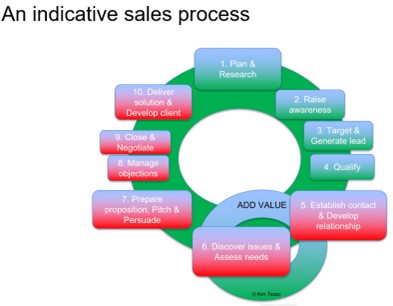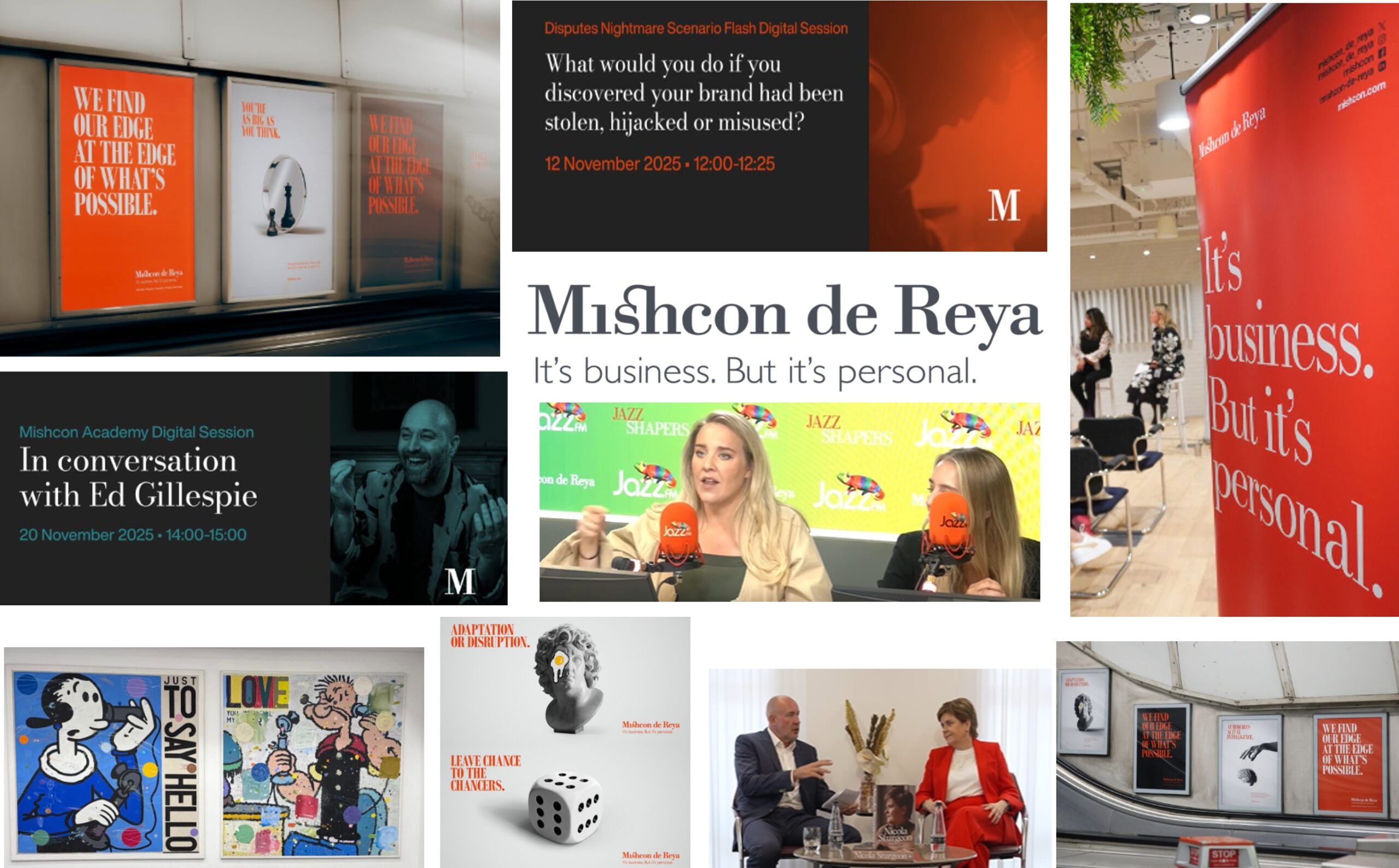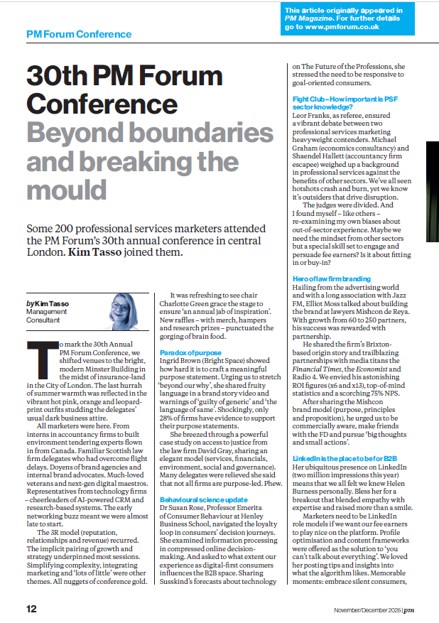
Before I start planning for 2022, I thought I’d reflect on nine marketing and business development trends in 2021. Some of these observations might make useful entries in your PESTLE or competitor analyses (a short explainer video on marketing audits and PESTLE analysis ) or scenario and marketing plans.
-
Attitude matters
Early in 2021, LexisNexis reported that 78.4% of no growth firms claimed they were negatively impacted by the pandemic. 54.3% of the high growth firms saw the pandemic as a beneficial source of commercial tailwinds. It just goes to show you the power of a positive attitude – see challenges as opportunities rather than threats.
In November 2021, ‘pandemic pessimism has turned to optimism across the UK’s legal sector” according to PwC’s 2021 Law Firms’ Survey (LFS). It reported that despite four in five Top 100 firms predicting falls in fee income for FY21 in last year’s report, 97% of Top 100 UK firms outperformed their revenue and profit expectations. The Top 10 and 26-50 bands posted a boost in profit of 23% and 21% respectively, closely followed by growth of 13% across Top 11-25 firms and 17% in the Top 51-100 band.
-
New M&BD priorities
In February 2021, the ninth annual benchmark survey by Meridian West found that professional service firms saw three priorities emerge following Covid-19:
- Investment in digital tools and automation – 74% said it had become more important
- Cost management to remain front of mind
- Diversification will drive recovery – 47% said they will pursue growth opportunities by expanding into new client segments, 45% will broaden their service propositions while 39% will look at business model change.
Clarifying propositions, engaging clients in new ways and improving the client experience were marketing priorities. The most effective M&BD approaches were found to be:
- 84% placed regular virtual key account meetings with clients among their top three activities for maintaining engagement
- 80% selected thought leadership and content marketing
- 55% thought virtual conferences and webinars were an effective strategy to replace in person marketing
Somewhat at odds with these findings, the activities highest on the priority lists were:
- 17% Making improvements to client service/experience
- 14% Creating thought leadership and insight campaigns
- 14% Improving and establishing account management
- 9% Relaunching or refreshing the firm’s brand
- 9% Obtaining feedback from clients
- 9% Providing training and support to fee-earners
- 6% Marketing via social and digital channels
- 4% Launching new products and services
- 3% Investing in automation and artificial intelligence
-
Focus on innovation
I have worried about the absence of a formal approach to innovation in professional services for many years. So it was interesting to read – back in February 2021 – about how law firm Howard Kennedy pushed forward on this front.
The Board agreed to invest in professionalising its approach to innovation with the creation of a research and development team alongside its data insight and thought leadership teams. This helped separate the improvement of the firm’s internal processes from the focused mission of helping clients to use lawyers less.
The firm recruited a Head of R&D from outside the legal sector who started by looking at how to make various tools talk to each other. The team includes roles such as Innovation Manager and Data Scientist. They also created the Kennedys Innovation Group combining R&D with Public & Corporate Affairs. Its internal incubator programme – the Ideas Lab – is in its second round and two new product prototypes are being developed.
Kennedys IQ is a separate company that opens up the possibility of forming joint venture with clients to develop products together. And there is an IQ Platform which is the synthesis of human expertise and machine learning – which has six proven solutions in use with multiple clients.
-
Growth of D&I and ESG
Diversity and Inclusion initiatives continued to gain pace. From my perspective, the majority of the action appeared to be around improving the representation of racial groups and LGBT+. Personally, I’d like to see more being done for the disabled and neurodiverse.
There are over 11 million people with a disability or long term illness in the UK – this equates to around 1 in 5. A third of disabled people experience difficulties relating to their impairment in accessing public, commercial and leisure services. And a staggering 59% of all deaths from the Pandemic have been those of disabled people (Disability Rights UK).
Web site accessibility is a legal requirement. Since September 2020, all UK public sector bodies’ websites and mobile applications need to conform with WCAG 2.1 Level AA. Craft Content Management System – which has made great headway in accessibility – has been recently selected as the new CMS for the World Wide Web consortium (WC3).
Increasingly, clients are demanding to see firms’ ESG (Environmental, Social and Governance) credentials. And it is harder to make this a fundamental part of your mission, vision and strategy rather than a sticking-plaster policy. Firms are increasingly being asked to use one of the many audit or assessment tools such as EcoVadis, Supplyshift or IntegrityNext. Some clients are using more robust, sophisticated assessment platforms such as CDP (formerly carbon Disclosure Project) or TCFD (Task Force on Climate-Related Financial Disclosures).
-
Thought leadership maintains momentum
Many firms still confuse content marketing and thought leadership. Moving on from old definitions by the likes of Laurie Young and Tim Prizeman, the latest definition of thought leadership is: “Knowledge from a trusted, eminent and authoritative source that is actionable and provides valuable solutions for stakeholders”.
Edelman reported “86% of those surveyed thought the thought leadership they consumed was ‘good, mediocre or poor in quality” – not so good for those aspiring to excellence then.
In an article on “Future thinking” in November 2021, Claire Mason of Man Bites Dog – the award winning ideas and thought leadership consultancy shared her company’s strategic ideation model to help develop impactful thought leadership campaigns:
- Market – Think big and take an expansive look at the market and megatrends
- Clients – Put yourself in your clients’ shoes and consider how these impact the issues they are grappling with
- Competitors – Which themes might help you differentiate – where are competitors absent?
- You – Where do these themes align with your strengths and capabilities where you have a comparative advantage?
She stresses the need for a strong core idea: “a radical concept that is against the grain”. And to support the story with evidence that is expert opinion, economic forecasting, scenario planning or novel and real-time data.
You might consider taking a look at a peer-reviewed publication “The tensions of defining and developing thought leadership within knowledge-intensive firms” by William S Harvey, University of Exeter Business School; Vince-Wayne Mitchell University of Sydney Business School; Alessandra Almeida Jones, Baker MacKenzie and Eric Knight, Macquarie Business School.
-
Brands return to the spotlight
After the initial reaction to Covid, many firms felt that a brand refresh was important. An attempt to stand out from the crowd and build awareness amongst new markets and solidify loyalty amongst existing clients. B2B brands have been somewhat neglected in the past. But Covid seems to have caused a surge of interest in brands – the need to connect purpose beyond profit and values to stand out from the crowd and act as an attractor for increasingly hard to recruit talent.
In January 2021, Luminous launched a “B2B Brightest Brands” index. Sadly, their findings revealed that the majority of B2B businesses in their 200 data set are not “shining bright” for their brands.
Out of 18 sectors, professional services ranks at number 9 – just below financial services. Only seven out of 22 professional services brands rank in the top 50: EY, Freshfields, Deloitte, Grant Thornton, PwC, Arup and Mott MacDonald.
In November 2021, Kathy Innes of Ecovis explained how her firm used the framework in the book “Building Brand Experiences – a practical guide to retaining brand relevance” by Darren Coleman.
This holistic approach has three iterative stages:
- Brand experience environment
- Brand experience essentials
- Brand experience enablers
“The heart of business” by Hubert Joly also received recognition. From how to translate purpose into action:
- Purpose: Why our firm or brand exists (our role in society)
- Vision: Where we want to get to with the purpose by some specific point in time
- Mission: What bold moves we will take to achieve the vision
- Values: How we behave as a brand
- Positioning: How all of these is encapsulated to occupy a distinct place in people’s minds.
To the four questions when considering new business ideas:
- Doe the idea fit with our purpose as an organisation?
- Is it good for our clients?
- Can we deliver on it?
- Can we make money?
-
Growing importance of automation and digital tools
While most firms have dedicated digital experts in their marketing and business development teams, it became apparent that we all need to develop our understanding of a range of digital tools.
Marketing automation platforms such as Hubspot, Pardot (part of the Salesforce family) and Active Campaign are more commonplace. (More detail on martech in this March 2020 article).
Google Analytics, Google Data Studio, Google My Business, SEMrush (and SimilarWeb) and the changes to cookie laws joined the list of essentials with which all marketers must be familiar.
Despite Covid showing us the importance of digital marketing and the power of email marketing, it seems that many firms still have to crack the CRM challenge. Lexis Nexis reported that two thirds of law firms that did not grow in 2020 had no CRM.
-
The challenge of hybrid events
Everyone was – and still is talking about – the challenge of hybrid events.
Having mastered the use of technology for virtual events, the next step is to consider how we manage events where there are people in the room as well as on the wall on a screen.
Dealing effectively with introductions (for those who do not have their names on screen) and turn-taking (ensuring that someone is watching and ensuring that online participants are included) appear to be the main issues to ensure there are no second class participants.
-
Audio rather than visual?
The importance of video has risen over recent years as the following statistics indicate:
- 84% of people say they’ve been convinced to buy a product or service by watching a brand’s video
- 54% of employees expect to see video in the workplace (so video is important for internal communications)
- 71% of B2B marketers and 66% of B2C marketers use video marketing
- 87% of marketers reported that video provides a positive ROI
- Video generates more engagement than any other content type across all social platforms
Yet during the Covid pandemic we saw the rise of audio channels and tools. Podcasts moved out of their slow burn and took off. And there was a spike in interest in the Clubhouse social media platform. Some argued that it was easier to build a community using audio content.
So a shift from visual to audio content? But not all people get on with audio content – although it has obvious advantages for those who spend a lot of time travelling in cars or pursuing outdoor sports such as running or cycling.









